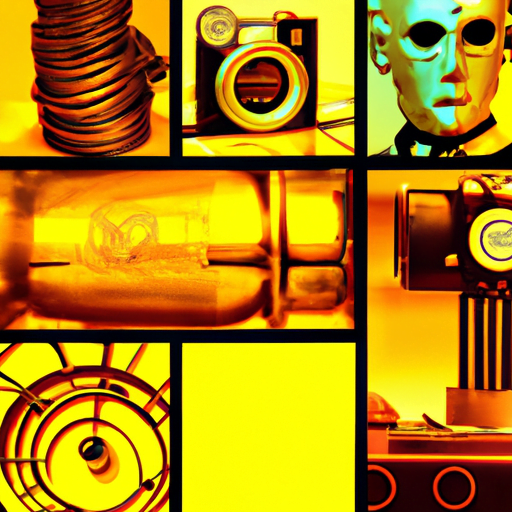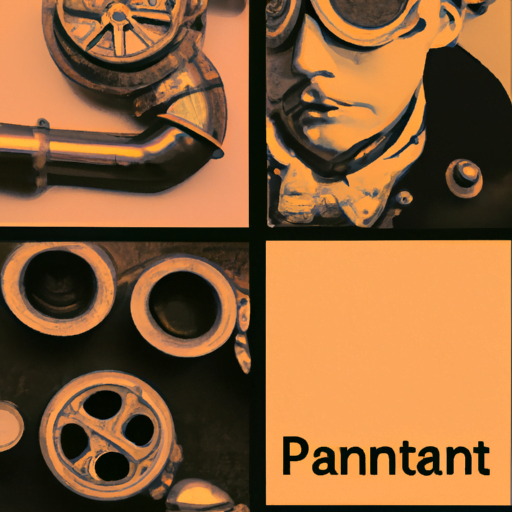
-
Table of Contents
- Exploring Steampunk Design Elements
- The Origins of Steampunk
- Key Elements of Steampunk Design
- 1. Victorian Fashion
- 2. Industrial Machinery
- 3. Futuristic Technology
- 4. Brass and Copper Accents
- 5. Weathered and Distressed Finishes
- Steampunk in Different Art Forms
- 1. Fashion
- 2. Interior Design
- 3. Art and Sculpture
- 4. Literature and Film
- The Evolution of Steampunk Design
- 1. DieselPunk
- 2. CyberPunk
- 3. Clockwork and Gearpunk
- Conclusion
Exploring Steampunk Design Elements

Steampunk design is a unique and captivating aesthetic that combines elements of Victorian-era fashion, industrial machinery, and futuristic technology. It is a genre that has gained popularity in recent years, influencing various forms of art, fashion, and design. In this article, we will delve into the world of steampunk design, exploring its key elements, origins, and how it has evolved over time.
The Origins of Steampunk
Steampunk as a genre originated in the late 20th century, drawing inspiration from the works of authors such as Jules Verne and H.G. Wells. These writers envisioned a world where steam power remained the dominant source of energy, leading to the creation of fantastical machines and inventions. The term “steampunk” itself was coined in the 1980s by science fiction author K.W. Jeter.
Steampunk design takes cues from the Victorian era, which spanned from the mid-19th century to the early 20th century. This period was characterized by ornate fashion, intricate architecture, and the rise of industrialization. Steampunk design elements aim to capture the essence of this era while adding a futuristic twist.
Key Elements of Steampunk Design
Steampunk design incorporates several key elements that help create its distinctive aesthetic. Let’s explore some of these elements:
1. Victorian Fashion
One of the most prominent aspects of steampunk design is its incorporation of Victorian-era fashion. This includes corsets, top hats, waistcoats, and long coats. The clothing often features intricate details such as lace, ruffles, and brass buttons. Steampunk fashion is not limited to a specific gender, allowing individuals to express themselves through a wide range of styles.
2. Industrial Machinery
Steampunk design draws heavily from the industrial revolution, showcasing machinery and gadgets that are powered by steam. These machines often have exposed gears, cogs, and pipes, giving them a raw and mechanical appearance. Examples of steampunk machinery include airships, steam-powered locomotives, and elaborate contraptions that serve various purposes in the fictional steampunk world.
3. Futuristic Technology
While steampunk design is rooted in the past, it also incorporates futuristic elements. This fusion of past and future is what sets steampunk apart from other design styles. In steampunk, advanced technology is often portrayed using steam power instead of electricity. This can include inventions such as steam-powered computers, robotic limbs, and energy weapons.
4. Brass and Copper Accents
Brass and copper are commonly used metals in steampunk design. These materials add a sense of warmth and authenticity to the aesthetic. They are often used for decorative accents, such as gears, buttons, and trimmings. The use of these metals helps create a cohesive and visually appealing steampunk look.
5. Weathered and Distressed Finishes
Steampunk design often incorporates weathered and distressed finishes to give objects an aged and worn appearance. This can include rust, patina, and tarnish on metals, as well as worn leather and faded fabrics. These finishes add depth and character to steampunk creations, evoking a sense of history and adventure.
Steampunk in Different Art Forms
Steampunk design has transcended its origins in literature and has influenced various art forms. Let’s explore how steampunk has made its mark in different creative fields:
1. Fashion
Steampunk fashion has gained popularity in recent years, with enthusiasts embracing the unique style and creating their own steampunk-inspired outfits. Steampunk fashion shows often feature a mix of Victorian-era clothing, industrial accessories, and futuristic elements. Designers have also incorporated steampunk elements into mainstream fashion, with brands releasing steampunk-inspired collections.
2. Interior Design
Steampunk design has also made its way into interior design, with enthusiasts incorporating steampunk elements into their homes and commercial spaces. This can include furniture with exposed gears and pipes, vintage industrial lighting fixtures, and decorative accents made from brass and copper. Steampunk-inspired interiors often have a sense of adventure and whimsy, creating a unique and immersive environment.
3. Art and Sculpture
Artists have embraced steampunk as a source of inspiration, creating intricate sculptures and artworks that showcase the genre’s unique aesthetic. These artworks often feature fantastical machines, futuristic cityscapes, and characters dressed in steampunk fashion. Steampunk art combines traditional techniques with modern materials, resulting in visually stunning and thought-provoking pieces.
4. Literature and Film
Steampunk’s origins lie in literature, and it continues to be a popular genre for authors and filmmakers. Steampunk novels often explore alternate histories and fantastical worlds, combining elements of science fiction and adventure. In film, steampunk has been featured in movies such as “Wild Wild West” and “The League of Extraordinary Gentlemen,” showcasing the genre’s visual appeal on the big screen.
The Evolution of Steampunk Design
Over the years, steampunk design has evolved and diversified, branching out into various subgenres and styles. Let’s take a look at some of the notable subgenres within the steampunk design movement:
1. DieselPunk
DieselPunk is a subgenre of steampunk that takes inspiration from the diesel-powered era of the early 20th century. It features designs that incorporate elements of Art Deco, military aesthetics, and early aviation. DieselPunk often has a more gritty and industrial feel compared to traditional steampunk.
2. CyberPunk
CyberPunk is another subgenre that has strong ties to steampunk. It combines futuristic technology with a dystopian setting, often exploring themes of artificial intelligence, virtual reality, and the impact of technology on society. CyberPunk design elements can be seen in movies like “Blade Runner” and “The Matrix.”
3. Clockwork and Gearpunk
Clockwork and Gearpunk focus on the intricate mechanics of gears and clockwork mechanisms. These subgenres often feature highly detailed and ornate designs, showcasing the inner workings of machines. Clockwork and Gearpunk design can be found in various art forms, including jewelry, sculptures, and fashion accessories.
Conclusion
Steampunk design is a captivating and imaginative aesthetic that combines elements of the Victorian era, industrial machinery, and futuristic technology. It has influenced various art forms, including fashion, interior design, and literature. Ste
